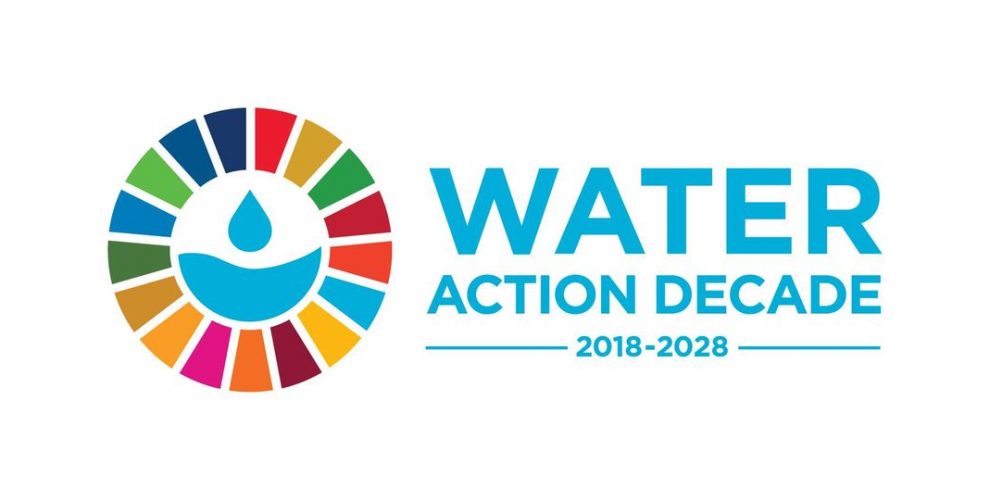Water resources play a critical role in ensuring sustainable development of Tajikistan. First of all, this is due to the fact that the country has quite huge fresh water resources. In one of his speeches, the Leader of the Nation, President of the Republic of Tajikistan, respected Emomali Rahmon, noted that “The rational use of water and energy resources is an integral part of sustainable development.” Water currently serves as the country’s main source of energy; more than 95% of the country’s electricity is generated from hydroelectric power plants. Water resources are used in irrigated agriculture, which produces about 80% of agricultural products, for drinking water supply and sanitation, in industry and fisheries, which play an important role in providing high-quality food, security and public access. Water also contributes to providing employment to the population. Further development of hydropower, irrigated agriculture, and industry will create new jobs. Irrigated agriculture is particularly important in this context, since it provides employment to more than half of the country’s rural population.
In the field of water resources, the Ministry carries out its activities in the following areas:
• implementation of a unified state policy and integrated water resources management;
• development of strategies, programs, concepts and development plans;
• regulation of the use and protection of water resources;
• capacity development;
• assistance in rational use and protection of water resources.
• coordination of the activities of various ministries and departments dealing with issues related to various aspects of management, use and protection of water resources;
• state control and supervision over the safety of hydraulic structures;
• maintaining the state water cadastre regarding water use;
• development of project proposals and attraction of investments in the water sector;
• and other functions assigned to him by the Regulations of the Ministry.
In Tajikistan, the zone of formation of river flow makes up 90% of its territory. The basis of the water resources of the Republic of Tajikistan are glaciers, rivers, lakes, reservoirs and groundwater. In general, the average long-term flow of rivers formed in Tajikistan is 64 km³/year, including 62,9 km³/year in the Amu Darya river basin and 1.1 km³/year in the Syrdarya basin. The rivers of Tajikistan form 55,4% of the average long-term surface runoff of the Aral Sea basin.
Average annual precipitation in Tajikistan is about 760 mm, varying from 100 mm in some individual regions of the south of the country to 2400 mm in the highlands of the Pamirs.
Glaciers. The area of glaciation in the mountains of the Central Asian republics is about 17 thousand km2, of which more than 60% is located in Tajikistan. The number of glaciers in the republic is 14,509 with a total glaciated area of 11,146 km2, which is about 8% of the entire territory of the country.
The largest glacial zone in Tajikistan (60%) is the territory adjacent to the highest peaks – Ismoili Somoni (Communism) (7495 m) and Abu Ali ibn Sina (Lenin) (7134 m), where the largest dendritic glaciers by area are located – Fedchenko (651,7 km2), Grum-Grzhimailo (143 km2), Garmo (114,6 km2) and dozens of other glaciers with an area of more than 30 km2. Glaciers with an area of more than 1 km2 make up only 20% of the total number of glaciers, however, they contain about 85% of the total ice volume. The total ice reserve in glaciers is about 845 km3.
Fedchenko Glacier. The Fedchenko glacier is one of the largest glaciers in the world: its length is 77 km, width from 1700 to 3100 m. The glacier originates at the foot of Revolution Peak on the northern slope of the Yazgulem ridge and flows along the eastern slope of the Academy of Sciences ridge.
The thickness of the ice in the middle part of the glacier reaches 1000 m, and the total area of glaciation and snowfields is 992 km2. The glacier is a type of complex valley glacier and is the world’s largest valley glacier. The upper end of the glacier is at an altitude of 6280 m, and the lower end is at 2900 m, the height of the snow line is 4650 m.
Rivers. Rivers are the most hidden wealth of Tajikistan. 947 rivers flow through the country, the total length of which exceeds 28,500 km. The main waterways of the country are the Amu Darya and Syr Darya with their tributaries. The Amudarya River basin is made up of the main river systems: the Pyanj River with its main tributaries Gunt and Bartang, the Vakhsh River, which collects the waters of the Alai Valley and the northern Pamirs; the rivers Kafirnigan and Surkhandarya, flowing from the southern slopes of the Gissar ridge. In general, the average long-term river flow generated in Tajikistan is 64 km3/year, including 62,9 km3 in the Amu Darya basin and 1,1 km3 in the Syrdarya basin. The rivers of Tajikistan provide 55,4% of the average long-term surface runoff of the Aral Sea basin.
Syrdarya River. The Syrdarya River is the second largest river in Central Asia, with a drainage area of 150,100 km2. The total length of the Syrdarya from the confluence of the Naryn and Karadarya rivers is 2684 km, and from the sources of the Naryn river 3019 km. The average long-term river flow is 37,14 km3. The river flows through the northern part of Tajikistan with a length of 192 km. The major tributaries of the river in Tajikistan are the Isfara, Khojabakirgan, Isfara and Aksu rivers. The total flow generated in the Tajik part of the Syrdarya River basin is insignificant and amounts to about 1.1 km3/year. The main flow of rivers in the Syrdarya basin is formed on the territory of Kyrgyzstan, about 75%, then the Syrdarya flows through the territory of Uzbekistan and Tajikistan and ends in the territory of Kazakhstan, flowing into the Northern Aral.
Amudarya River. The Amudarya River is the largest river in Central Asia, with a drainage area of 199,350 km2, a length of 2,294 km and an average annual flow of 78,46 km3. Its drainage basin includes: Afghanistan, Kyrgyzstan, Tajikistan, Turkmenistan and Uzbekistan. The major tributaries of the Amu Darya are the rivers Vakhsh, Pyanj (the confluence of these two rivers forms the Amu Darya) and Kafirnigan, whose share in the total water resources of this basin is 75,5%. The Amu Darya River is important for the livelihood of millions of people living in the basin. Water resources are used mainly for agriculture, power generation, industrial, domestic and drinking purposes.
Lakes. There are about 1,300 lakes in Tajikistan with a total area of 705 km2. Most lakes are represented by reservoirs with a surface area of less than 1 km2 and they account for 97,5% of the total number of lakes and only 9% of the total area, which makes them very vulnerable to future anthropogenic and technogenic impacts.
The main number of lakes (73%) are concentrated in the Pamir-Alai mountains in the altitude range of 3500-5000 m above sea level. Their area makes up 80% of the total water space of the republic’s lakes. The degree of saturation of lakes in the low-mountain and foothill zones is low, where there are about 30 lakes with a total area of 2,4 km2. The lakes of Tajikistan contain more than 46,3 km3 of water, of which 20 km3 are fresh.
Lake Sarez. Lake Sarez is an amazingly beautiful place – a precious pearl, surrounded by the Pamir Mountains. The lake was formed on February 18,1911 after a strong earthquake (9 points), when the Murgab River was dammed as a result of a strong landslide with a volume of 2,2 km3, which buried the village of Usoi, forming a natural dam 567 m high – the Usoi Dam. The water that filled the basin in the same year flooded the village of Sarez, which gave the name to the lake. The length of the lake is about 55,8 km, the depth is about 505 m, the water edge is 3263 m above sea level, the volume of water is more than 17 km³.
Reservoirs. Reservoirs are not natural sources of water resources, but they play an important role in regulating river flows for its rational use in the interests of the economies of river basin countries. This importance of reservoirs becomes more obvious against the backdrop of ongoing climate change. Reservoirs are of no small importance in preventing floods and protecting economic facilities from the destructive effects of floods, which are not uncommon in Central Asia.
In Tajikistan, 11 reservoirs for various purposes have been built and are in operation. The largest of them are: Kairakkum, located in the northern part, and Nurek, in the central part of Tajikistan. The total water area of all reservoirs is 664 km2, the total volume is 15,344 km3, including useful 7,63 km3, which is 13% of the average long-term flow of rivers in the Aral Sea basin.
Underground and mineral waters. Renewable groundwater resources in Tajikistan, according to their origin, are divided into two parts: those formed naturally in the mountains and in the drainage area, and those formed under the influence of filtration in irrigated areas.
Potential groundwater reserves are 18,7 km³/year, while operational reserves are estimated at 2,8 km³/year. The largest reserves of groundwater are found in the river basins: Vakhsh – 4919 million m3/year, Syrdarya – 3579 million m3/year and Kafirnigan – 2505 million m3/year.
Groundwater in Tajikistan is distributed unevenly, both in area and in depth.
Groundwater resources in the Sughd region are estimated at 25,6% of the national value, and operational reserves are 45,8%, respectively in the Khatlon region – 21,8% and 25,9%, in the Gorno-Badakhshan Autonomous Region – 21,4 % and 1,28%, in areas of republican subordination.
Mineral water. Over 200 mineral water sources are registered on the territory of the republic. In the regions of development of Paleosian deposits and igneous rocks, 86 natural outlets of carbon and nitrogen waters were noted; about 70 of them are located in the Pamirs. The highest yield sources Obigarm and Khoja Obigarm are located within the Gissar ridge.
Particularly famous are the mineral springs: Shaambary, Anzob, Fayzabad, Istaravshan, thermal and medicinal springs: Khavatag, Taboshar, Adrasman, Yavroz, Karatag, Babatag, Garmchashma, Ayvadzh, Bakhmyr, Ellis, etc. Resorts and sanatoriums have been built on the basis of some of the springs.
Return waters. Surface discharges and high drainage from irrigated areas. Outdated irrigation technology (furrows) and the presence of rocky soils also contribute to an increase in return flow. Return flow in the republic has a significant volume and reaches about 3,5-4,0 km3/year, of which about 3,0 km3/year is collector-drainage water from irrigated lands and 0,5 km3/year is municipal, domestic and wastewater industrial.
Thus, in Tajikistan, in general, about 100 sources and deposits of geothermal waters have been identified, which can partially compensate for the deficit in the fuel and energy balance of Tajikistan.
Alinazarova Nozukmo – 1st year student by specialist of 1-270101.10 economics and organization (energy) department of economic theory and entrepreneurship activity











